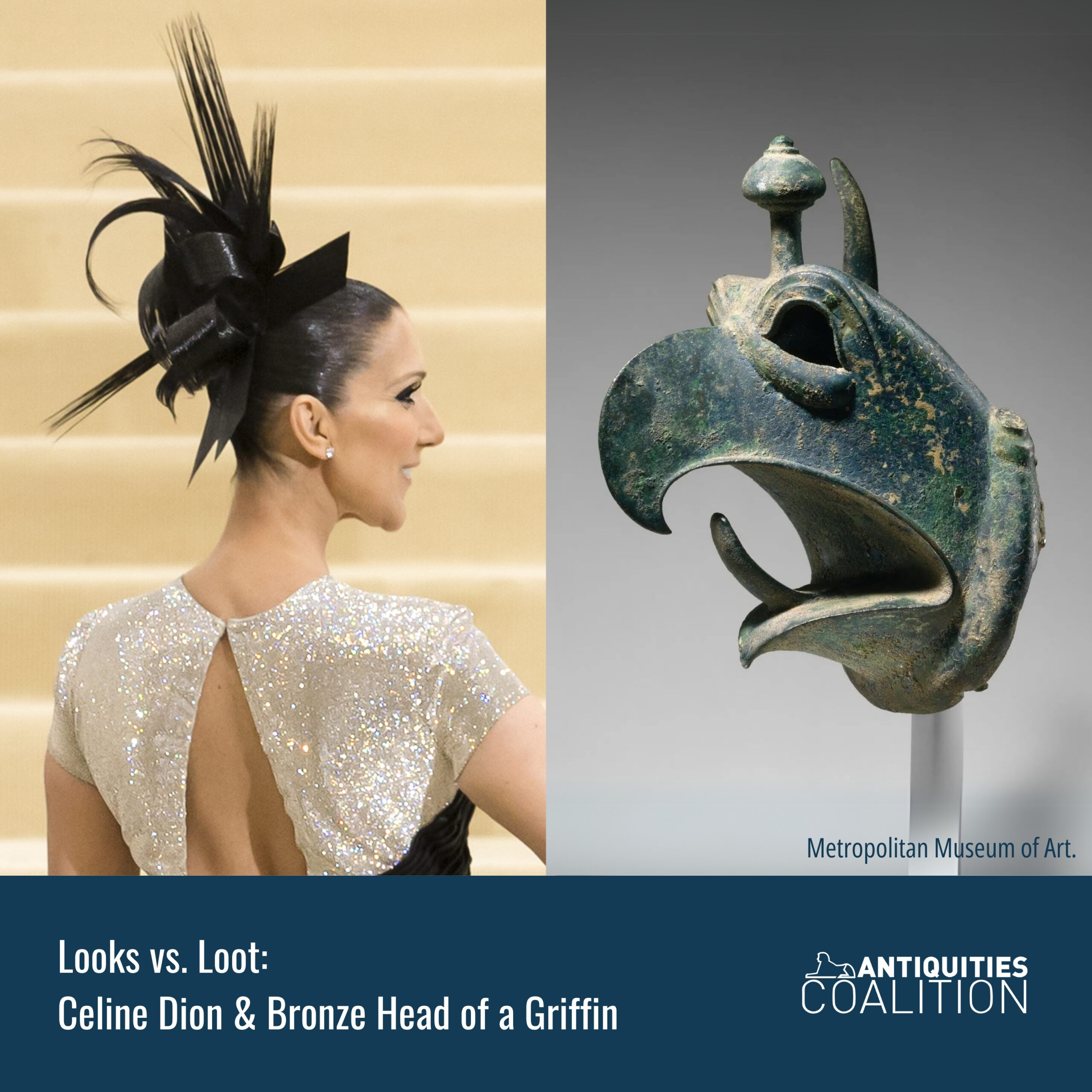Tailoring Museum Policy: The 2025 Looks vs. Loot
May 5, 2025
The Metropolitan Museum of Art—home to thousands of cultural masterpieces from Egyptian jewels to sacred Buddhas—once again served as the resplendent backdrop for the annual Met Gala, held this year on May 5. As celebrities, fashion icons, and the cultural elite walked the red carpet in celebration of Superfine: Tailoring Black Style, the Antiquities Coalition launched the third annual Looks vs. Loot
The Looks vs Loot campaign spotlights another side of NYC’s iconic venue: the ongoing crisis of cultural racketeering. While the gala’s glamour makes headlines, behind the scenes, the Met continues to reckon with its role in the illicit antiquities trade.
In a welcome development, the Met has signaled a major shift in its approach. Last May, just days after the 2024 Gala, the museum announced a new plan for addressing the provenance of its collection, which includes hiring a provenance research team of four experts to audit its holdings, as well as forming a committee of 18 curators, conservators, and others to review all legal and ethical guidelines. The museum also said it would work to “convene thought leaders, advocates and opinion makers” in the field.
These efforts align with specific recommendations outlined by the Antiquities Coalition, such as launching a task force, building capacity in provenance research, strengthening best practices, and using the institution’s platform both to raise awareness of the problem and to find solutions. Since the announcement, the museum has indeed appointed the first-ever head of provenance, who leads a team of 10 full-time researchers.
Take a look at our third annual Looks vs. Loot feature, where we draw striking comparisons between couture looks and contested antiquities—all now returned home to their country of origin. Nearly all these repatriations occurred within the last year, demonstrating strong cooperation and a will to right past wrongs.
For the 2025 Gala, celebrities and stylists showcased garments “Tailored for You”. The dress code was interpreted widely, but at its core recalls the monumental impact of small, meticulous changes. In that spirit, we extend our call on the Met to tailor its provenance policies to reflect its public commitments by proactively addressing contested antiquities and setting a gold standard for museum transparency and accountability worldwide.
While the Met has made promising strides, there’s still a need for continued refinement and implementation of its plan to fully realize its excellent goals moving forward.
For instance, there is an opportunity for greater proactivity—experts like the ICIJ have identified over 1,000 artifacts in the Met’s collection linked to alleged traffickers, and the museum should actively address these concerns. Transparency is another area for growth. The Met’s “Repatriated Objects” webpage, for example, does not appear to be fully up to date, despite growing public interest in this issue. By continuing to tailor its policy and embrace transparency, the Met—and its many contemporaries—have the potential to raise awareness of the harms of antiquities trafficking while celebrating the remarkable progress being made.












